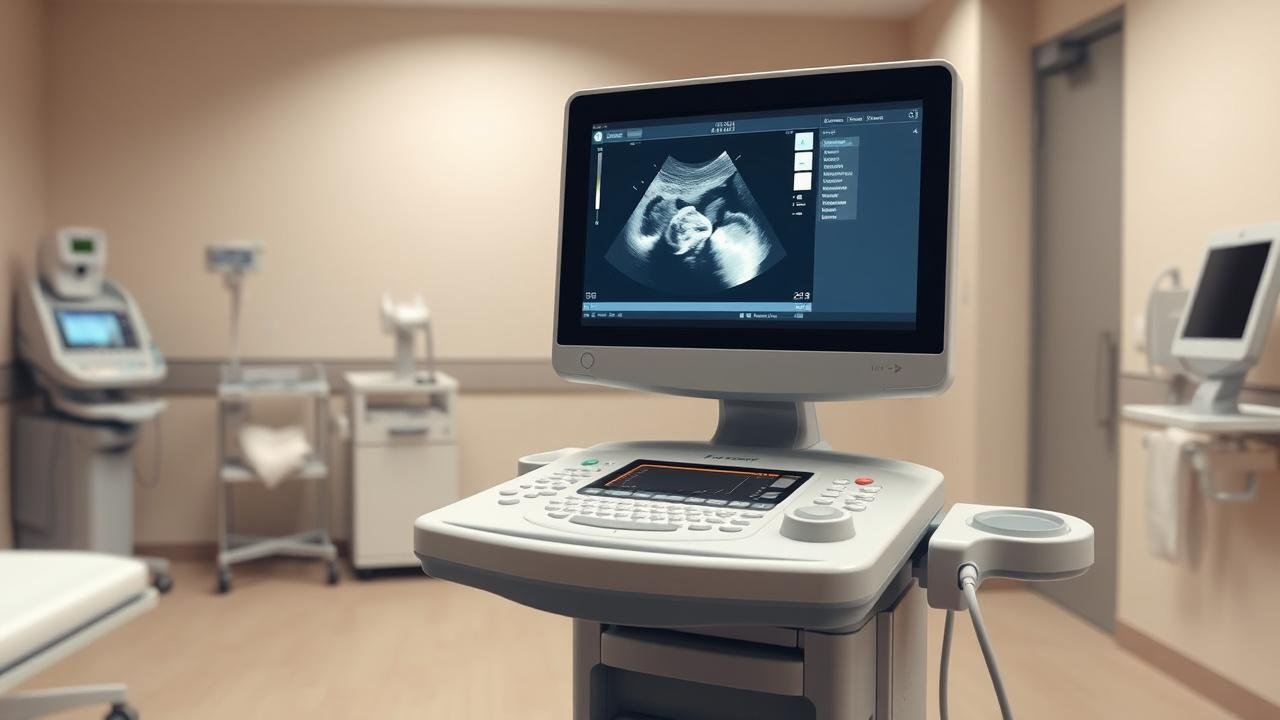Placenta previa is a complex pregnancy condition that can significantly influence delivery choices and safety protocols. Understanding its causes, early warning signs, and diagnostic processes is crucial for expectant mothers and healthcare providers alike. This blog explores how placenta previa affects pregnancy progression, the challenges it presents during labor, and the surgical strategies often required for safe delivery. We’ll also cover essential postpartum care, potential long-term outcomes, and practical steps to reduce risks. Each section delves into vital aspects of placenta previa, offering a comprehensive guide to navigating this condition with confidence and care.
What Is Placenta Previa and How Does It Affect Pregnancy?
Placenta previa occurs when the placenta partially or completely covers the cervix, posing significant challenges throughout pregnancy and delivery. This condition can lead to painless vaginal bleeding in the second or third trimester, increasing risks for both mother and baby. Understanding how placenta previa affects pregnancy is essential, as it directly influences decisions covered in sections like ‘Diagnostic Methods and Prenatal Monitoring for Placenta Previa’ and ‘Managing Placenta Previa During Labor.’ Early detection through ultrasound allows healthcare providers to carefully monitor placental positioning, helping to anticipate complications during childbirth. Because placenta previa often necessitates specialized interventions, such as cesarean delivery techniques detailed later in the blog, awareness of this condition shapes critical safety measures. Moreover, recognizing its impact guides postpartum care strategies and informs preventive lifestyle adjustments aimed at minimizing future risks. Exploring this foundational aspect sets the stage for a comprehensive understanding of how placenta previa intricately affects maternal and neonatal health outcomes.
Risk Factors and Early Signs of Placenta Previa to Watch For

Recognizing the risk factors and early signs of placenta previa is crucial for timely diagnosis and effective management, as explored in the diagnostic and monitoring section. Key risk factors include previous cesarean deliveries, advanced maternal age, multiple pregnancies, and a history of uterine surgery, all of which heighten vulnerability to abnormal placental placement. Early symptoms often involve painless vaginal bleeding during the second or third trimester, signaling the need for immediate medical evaluation. Awareness of these indicators allows healthcare providers to initiate appropriate prenatal surveillance strategies discussed in the diagnostic methods section, reducing complications during labor. Understanding these risks also informs decisions around delivery options and safety measures outlined later in the blog. By identifying warning signs early, expectant mothers can benefit from tailored interventions—whether conservative management or planned cesarean delivery—ensuring better outcomes as detailed in surgical considerations and postpartum care sections. This proactive approach ultimately supports both maternal and neonatal health throughout pregnancy and beyond.
Diagnostic Methods and Prenatal Monitoring for Placenta Previa
Accurate diagnostic methods and vigilant prenatal monitoring are essential for managing placenta previa safely, directly influencing delivery options and outcomes. Ultrasound imaging, particularly transvaginal ultrasound, remains the gold standard for early detection and precise localization of the placenta relative to the cervix. Regular sonographic assessments throughout pregnancy help track placental position changes, enabling timely identification of persistent previa cases that may require specialized care outlined in sections on labor management and cesarean techniques. Additionally, magnetic resonance imaging (MRI) can be employed in complex scenarios to assess placental invasion depth when surgical planning is critical. Prenatal monitoring extends beyond imaging; it includes evaluating maternal symptoms such as bleeding episodes discussed under risk factors and ensuring fetal well-being through non-stress tests. These comprehensive surveillance strategies allow healthcare providers to anticipate complications proactively, optimize timing and mode of delivery, and implement postpartum care protocols effectively. Thus, thorough diagnostics form a foundational pillar supporting safe pregnancy progression amidst placenta previa challenges described throughout the blog.
Managing Placenta Previa During Labor: Challenges and Medical Interventions

Managing placenta previa during labor presents significant challenges due to the risk of severe bleeding when the placenta partially or completely covers the cervix. This condition demands careful medical intervention to ensure maternal and fetal safety. Typically, spontaneous labor is avoided because contractions can disrupt placental attachment, leading to hemorrhage. Instead, planned cesarean delivery, as detailed in the surgical considerations section, is often the safest approach. Throughout labor management, continuous prenatal monitoring plays a critical role in detecting any signs of distress early on. Emergency protocols must be in place to address unexpected bleeding or premature labor linked to this condition. These interventions are closely connected with postpartum care strategies designed to manage blood loss and support recovery after delivery. Understanding these complexities helps expectant mothers and healthcare providers prepare effectively, tying back to preventive measures and awareness of early warning signs discussed earlier in the blog.
Surgical Considerations and Cesarean Delivery Techniques for Placenta Previa Cases
Surgical considerations in placenta previa cases are critical to ensuring maternal and neonatal safety, given the high risk of bleeding associated with the placenta’s abnormal position. Cesarean delivery techniques must be carefully planned to minimize hemorrhage, often involving a low transverse incision placed above the placenta or, in complex cases, a classical vertical incision to avoid disturbing placental tissue. Surgeons typically prepare for possible blood transfusions and have specialists on standby due to the potential for massive bleeding. These surgical strategies closely connect with prenatal monitoring protocols discussed earlier, which help anticipate complications and guide timing of delivery. Understanding these operative nuances complements knowledge from sections covering labor management challenges and postpartum recovery, highlighting how meticulous planning during surgery influences outcomes. Ultimately, mastering cesarean techniques tailored for placenta previa not only addresses immediate risks but also supports better long-term maternal and neonatal health outcomes, underscoring the importance of integrated care throughout pregnancy highlighted in this blog.
Postpartum Care and Recovery Strategies Following Placenta Previa Delivery

Postpartum care and recovery following a placenta previa delivery are critical components that ensure maternal safety and promote healing after the unique challenges posed by this condition. Due to the increased risk of hemorrhage during and after birth, as highlighted in the sections on managing labor and cesarean delivery techniques, close monitoring for excessive bleeding is essential in the immediate postpartum period. Recovery strategies often include tailored pain management, careful observation for signs of infection, and gradual physical activity adjustments to support uterine healing. Understanding these care protocols complements insights from prenatal monitoring and risk factor identification, emphasizing how early diagnosis influences both delivery planning and postpartum outcomes. Additionally, long-term maternal health considerations underscore the importance of comprehensive follow-up care to address potential complications like anemia or uterine scarring. By integrating preventive lifestyle advice with specialized post-delivery support, women can navigate recovery more confidently while minimizing risks associated with placenta previa’s complex impact on childbirth.
Long-Term Maternal and Neonatal Outcomes Associated with Placenta Previa
Long-term maternal and neonatal outcomes associated with placenta previa are crucial considerations when evaluating delivery options and safety measures. Mothers who experience placenta previa may face increased risks of complications such as heavy postpartum hemorrhage, which can affect recovery and future pregnancies, linking closely to the importance of postpartum care and recovery strategies. Neonates born from pregnancies complicated by placenta previa may require special attention due to potential preterm birth or low birth weight, highlighting why early diagnosis and prenatal monitoring are vital. Understanding these long-term effects underscores the need for careful surgical planning, particularly in cesarean delivery techniques tailored to minimize trauma. Moreover, recognizing risk factors and early signs can help implement preventive measures that reduce adverse outcomes over time. By exploring these lasting impacts alongside management during labor and lifestyle adjustments, families and healthcare providers can make more informed decisions that enhance both immediate safety and long-term health for mother and child.
Preventive Measures and Lifestyle Adjustments to Minimize Placenta Previa Risks
Taking proactive steps through lifestyle adjustments and mindful prenatal care plays a crucial role in reducing the risks linked to placenta previa. These preventive measures not only support safer pregnancy progression but also complement diagnostic vigilance and tailored delivery planning discussed earlier. Embracing a holistic approach fosters better outcomes for both mother and child, easing concerns during labor and recovery. Understanding how each phase—from early signs to postpartum care—interconnects empowers families facing this condition with confidence and clarity. At MomDadDispatch.com, we stand alongside you, offering compassionate insight throughout your unique journey.






